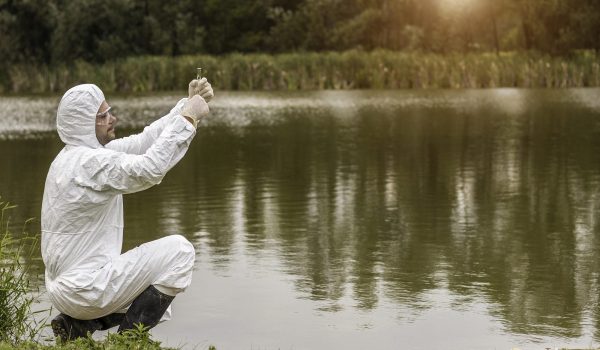Questions from the U.S. Supreme Court Justices during the November 6 oral argument in County of Maui v. Hawaii Wildlife Fund1 clearly reflect their struggle to resolve whether a discharge of pollutants to groundwater that eventually reaches a surface water is required to obtain a permit under the Clean Water Act (CWA)2. In fairness, some of the struggle can be attributed to exaggerated prophecies espoused by the parties and their amici. One side predicting that a contrary ruling will prompt industries to pump toxic wastes into pits or cut discharge pipes 10 feet from the water’s edge, and the other predicting that millions of homeowners with septic tanks will be subject to draconian fines and criminal prosecution.
Perhaps more so, the struggle derives from the fact that (1) the CWA is ambiguous with respect to whether the phrase “any addition of any pollutant to navigable waters from any point source”3 regulates only a direct connection between a point source and a surface water, or includes an indirect connection, with groundwater being the intermediary, and (2) Congress chose to leave regulation of groundwaters and land use outside the CWA, primarily to the states as “cooperative partners,”4 and lesser so to U.S. EPA under other federal environmental statutes.5
Maybe the Justices will follow the lead of Judge William Young from the U.S. District Court in Massachusetts. He states that the principle of Chevron6 deference provides a pathway to resolve the dilemma. In a November 26, 2019 decision7, Judge Young dismissed a claim that the Wychmere, MA Beach Club must obtain a CWA permit for its wastewater treatment plant and leach pits because pollutants were migrating from the pits into groundwater and then to nearby Wychmere Harbor. In so holding, Judge Young acknowledged the CWA’s ambiguity and competing principles, stating that in such situation he must follow Chevron and defer to U.S. EPA’s April 2019 interpretive statement8 that releases to groundwater are excluded from the CWA’s permitting requirements.
Judge Young concluded that the Agency’s statement, which contains 50+ pages of analysis of the statute, caselaw, and congressional history and was adopted after notice and comment, is a permissible construction of the CWA. In deferring to it, the Judge was not concerned with the fact that U.S. EPA offered conflicting interpretations of the same question at different times in different permitting, rulemaking and litigation settings, stating that the Agency’s inconsistency is not a basis for declining Chevron deference, and citing its acknowledgment and explanation of the inconsistency in the statement.
U.S. EPA’s April 2019 interpretive statement and the role of Chevron deference were, at most, an afterthought during the November 6 oral argument. Only time will tell whether the Supreme Court Justices will reconsider their significance and perhaps conclude that Judge Young provided them a clear pathway to resolve the dispute over-regulation of discharges to groundwater under the CWA.
[1] Decision below at 881 F.3d 754 (9th Cir. 2018), rehearing en banc denied, 886 F.3d 737 (9th Cir. 2018). Appeal No. 18-260, docketed here.
[2] 33 U.S.C. §§ 1251 et seq. The transcript from the oral argument is posted here .
[3] 33 U.S.C. § 1362(12).
[4] Compare 33 U.S.C. § 1251(a) with § 1251(b).
[5] These include the Safe Drinking Water Act, 42 U.S.C. §§ 300f et seq., and Resource Conservation and Recovery Act, 42 U.S.C. §§ 6901 et seq.
[6] Chevron U.S.A. Inc. v. Natural Resources Defense Council, Inc., 467 U.S. 837 (1984). Under the Chevron doctrine, if a statute is ambiguous and legislative history does not provide clear guidance, courts must defer to a permissible construction of the statute by the agency responsible for administering it.
[7] Conservation Law Foundation, Inc. v. Longwood Venues & Destinations, Inc., et al., Case No. 1:18-cv-11821-WGY.
[8] “Interpretive Statement on Application of the [CWA]…to Releases of Pollutants from a Point Source to Groundwater,” 84 Fed. Reg. 16,810 (April 23, 2019) (available here).

